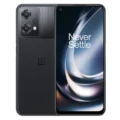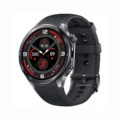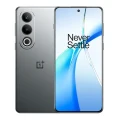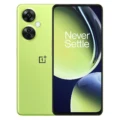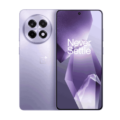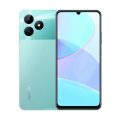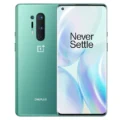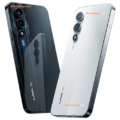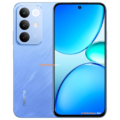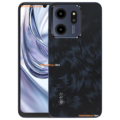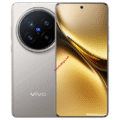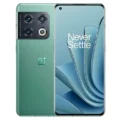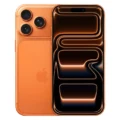Price List: Under Tk.5,000 | Tk.5001-10000 | Tk.10001-15000 | Tk.15001-20000 | Tk.20001-30000 | Tk.30001-40000 | More Mobiles
- Home
- All Mobile
- OnePlus
- Oneplus 7 Pro
Oneplus 7 Pro
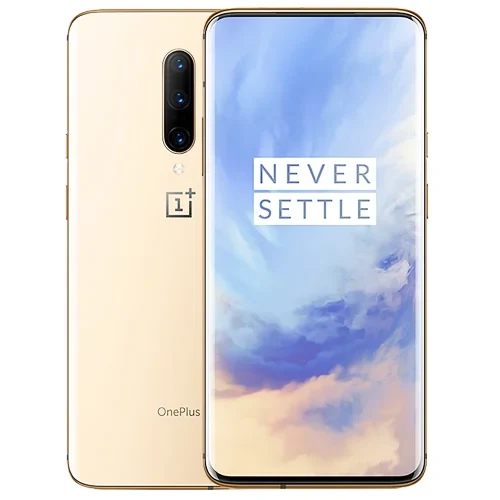


Specifications
Price in Bangladesh
| Official | 6GB 128GB ৳68,999 / 8GB 256GB ৳72,999 / 12GB 256GB ৳79,999 |
| Unofficial Unofficial prices and phones are available only non authorized shops. The device does not come with an official warranty in Bangladesh. | 6GB 128GB ৳47,000 / 8GB 256GB ৳47,000 12GB 256GB ৳50,000 |
General
| Device Type | Smartphone |
| Model | GM1911, GM1913, GM1917, GM1910, GM1915 |
| Announced | May, 2025 |
| Released | May, 2025 |
| Status | Available |
Hardware & Software
| Operating System OS => Every computer system run on a base software called Operating System (OS). Operating System controls all basic operations of the computer (such as smartphone, PDAs, tablet computers and other handheld devices). The Operating System allows the user to install and run third party applications (apps), apps are used to add new functionality to the device. | Android |
| OS Version | v9.0 |
| User Interface UI or user interface of a device is the look and feel of the on-screen menu system. How it works, its color scheme, how it responds to button presses, all of these things are part of the user interface. | Oxygen OS |
| Chipset Chipset is a group of integrated circuits designed to perform one or a more dedicated functions, often with real time computing constraints, Popular smartphones are equipped with more advanced embedded chipsets that can do many different tasks depending on their programming. | Qualcomm Snapdragon 855 |
| CPU CPU (Central Processing Unit) mostly known as processors, CPU processes instructions in order to carry out certain functions that make your device operate properly. Processors are often described as the brain of computers, smartphones and tablets, Smartphones and tablets rely on processors to carry out their every task, Processors are an incredibly important factor in selecting any type of computing device, including your smartphone. | Octa core (2.84 GHz, Single core, Kryo 485 + 2.42 GHz, Tri core, Kryo 485 + 1.8 GHz, Quad core, Kryo 485) |
| CPU Cores | 8 Cores |
| Architecture | 64 bit |
| Fabrication | 7 nm |
| GPU GPU (Graphics Processing Unit) is a single-chip processor designed to rapidly manipulate and alter memory to accelerate the creation of images in a frame buffer intended for output to a display, This includes things such as lighting effects, object transformations, and 3D motion. | Adreno 640 |
| RAM (Memory) RAM (Random Access Memory) is a type of computer memory that can be accessed randomly, any byte of memory can be accessed without touching the preceding bytes that allows information to be stored and accessed quickly from random locations. RAM is the most common type of memory found in computer systems, smartphones, tablets and other electronic devices. | 6 GB, 8 GB, 12 GB |
Design
| Dimensions | 162.6 x 75.9 x 8.8 mm (6.40 x 2.99 x 0.35 in) |
| Weight | 206 g (7.27 oz) |
| Colors |
Mirror Grey, Almond, Nebula Blue |
| Build Material | Glass front (Gorilla Glass 5), glass back (Gorilla Glass 5), aluminum frame |
Display
| Display Type Display Technology => A number of display technologies and types used in mobile phones => TFT (Thin Film Transistor), IPS (In-Place Switching), OLED (Organic Light Emitting Diode), AMOLED (Active-Matrix Organic Light-Emitting Diode), Super AMOLED (an even advanced version of AMOLED), Resistive Touchscreen (Resistive touchscreens contain two layer of conductive material with a very small gap between them which acts as a resistance), Capacitive Touchsceen (Capacitive touchscreen technology consists of a layer of glass coated with a transparent conductor) | Fluid AMOLED |
| Size | 6.67 inches (16.94 cm) |
| Resolution | 1440x3120 px (QHD+) |
| Aspect Ratio | 19.5:9 |
| Pixel Density Pixel Density (PPI) is refers to the concentration of pixels on a particular display, measured in pixels per inch (ppi). Pixel density is calculated by dividing the diagonal pixel resolution of a display by its diagonal size, higher pixel density better display quality. | 515 ppi |
| Screen to Body Ratio | 88.3 % |
| Touch Screen | Capacitive Touchscreen, Multi-touch |
| Refresh Rate | 90 Hz |
| HDR 10 / HDR+ support |
Rear Camera
| Camera Setup | Triple |
| Main Camera | 48 MP |
| Second Camera | 16 MP |
| Third Camera | 8 MP |
| Sensors Sensors are electronic components that detects and responds to some type of input from the physical environment. The specific input could be light, heat, motion, moisture, pressure and location, The output is generally a signal that is converted to use in computing systems, a location sensor, such as a GPS receiver is able to detect current location of your electronic device. |
IMX586, Exmor-RS CMOS Sensor |
| Autofocus | Phase Detection autofocus, Continuous autofocus, Laser autofocus |
| OIS | |
| Flash Flash Light => There is commonly two types of flash lights are used in camera mobile phones, LED Flash (LED flash offers lower power consumption with drive circuitry that takes up very little room, LEDs can be strobed faster than any other light source), Xenon Flash (xenon flash produces an extremely intense full-spectrum white light for a very short duration) | Dual LED Flash |
| Image | 8000 x 6000 Pixels |
| Settings | Exposure compensation, ISO control |
| Zoom | Digital Zoom |
| Shooting Modes | Continuous Shooting, High Dynamic Range mode (HDR) |
| Aperture | f/1.6 |
| Camera Features |
Auto Flash, Face detection, Touch to focus |
| Video | 2160p@30/60fps, 1080p@30/60/240fps, 720p@480fps, Auto HDR, gyro-EIS |
| Video Recording Features | 3840x2160, 1920x1080, 1280x720 |
| Video FPS | 480 fps |
Front Camera
| Camera Setup | Single |
| Secondary |
Motorized pop-up 16 MP, f/2.0, 25mm (wide), 1/3.1", 1.0µm |
| Flash Flash Light => There is commonly two types of flash lights are used in camera mobile phones, LED Flash (LED flash offers lower power consumption with drive circuitry that takes up very little room, LEDs can be strobed faster than any other light source), Xenon Flash (xenon flash produces an extremely intense full-spectrum white light for a very short duration) | Screen flash |
| Aperture | f/2.0 |
| Camera Features |
Fixed Focus |
| Video | 1080p@30fps, gyro-EIS |
| Video FPS | 30 fps |
Battery
| Battery Type Battery Type => Cell phones run on various kinds of batteries depending on the manufacturer, phone size or shape and features. There are basically four types of cell phone batteries => Lithium Polymer, Lithium Ion, Nickel Metal Hydride and Nickel Cadmium. | Li-Ion (Lithium Ion) |
| Placement | Non-removable |
| Capacity Battery Capacity is a measure (typically in Amp-hr) of the charge stored by the battery, and is determined by the mass of active material contained in the battery. The battery capacity represents the maximum amount of energy that can be extracted from the battery under certain conditions. | 4000 mAh |
| Quick Charging | 30W wired Warp: 48 % in 20 minutes |
| USB Type-C | USB Type-C 3.1 |
Storage
| Storage Type | UFS 3.0 |
| Storage Capacity | 128 GB, 256 GB |
| USB OTG |
Network
| 2G Network |
GSM 850 / 900 / 1800 / 1900 |
| 3G Network |
HSDPA 800 / 850 / 900 / 1700(AWS) / 1800 / 1900 / 2100 |
| 4G Network |
1, 2, 3, 4, 5, 7, 8, 12, 13, 17, 18, 19, 20, 25, 26, 28, 29, 32, 34, 38, 39, 40, 41, 66 - Global |
| SIM SIM (Subscriber Identity Module) is a small card that contains mobile network subscriber's account information. This allows the phone using the card to attach to a mobile network. The SIM card is most commonly associated with GSM and UMTS mobile networks. Moving a SIM card from one phone to another allows a subscriber to switch mobile phones without having to contact their mobile network carrier. SIM cards can also be used by a phone to store limited amounts of data, such as phone numbers and text messages. | Standard SIM |
Data
| GPRS GPRS (General Packet Radio Service) is a packet oriented mobile data service on the 2G and 3G cellular communication system's global system for mobile communications (GSM), Generally, GPRS is used for the purpose of wireless data transfer, such as sharing pictures and videos or browsing the Internet via a mobile phone connection. | |
| EDGE EDGE (Enhanced Data GSM Environment) is a wireless network technology generally considered the next step in the 2G network offers data transfer rates up to four times faster than ordinary GSM networks, Generally, EDGE is used for the purpose of wireless data transfer, such as sharing pictures and videos or browsing the Internet via a mobile phone connection. | |
| Speed | HSPA 42.2/5.76 Mbps, LTE (5CA) Cat18 1200/150 Mbps |
| Web Browser Web Browser => a web browser is a software application used to locate, retrieve and display content on the World Wide Web, including Web pages, images, video and other files, The primary function of a web browser is to render HTML, the code used to design or markup webpages. | HTML5 |
Messaging
| SMS SMS (Short Messaging Service) is a text messaging service component of phone, Web, or mobile communication systems. It uses standardized communications protocols to allow mobile phone devices to exchange short text messages over the networks. | Yes |
| MMS MMS (Multimedia Messaging Service) is a standard way to send messages that include multimedia content (audio clips, video clips and images) to and from mobile phones over wireless networks using the WAP protocol. | |
| Email Email (Electronic Mail) is a system for receiving, sending, and storing electronic messages, Similar to a letter, email is text messages that may contain files, images, or other attachments sent via the internet to a recipient by using applications and software prograps. An email address is required to receive email, and that address is unique to the user. | Yes |
| IM IM (Instant Messaging) is an exchange of text messages through a software application, it enable you to create a kind of private chat room with another individual in order to communicate in real time over the Internet. | Yes |
Connectivity
| Bluetooth Bluetooth is a wireless communications technology for exchanging data between mobile phones, headsets, computers and other network devices over short distances without wires, Bluetooth technology was primarily designed to support simple wireless networking of personal consumer devices. | 5.0, A2DP, LE, aptX HD |
| Wi-fi Hotspot | |
| Infrared Infrared connectivity is an old wireless technology used to connect two electronic devices. It uses a beam of infrared light to transmit information and so requires direct line of sight and operates only at close range. | |
| USB | USB Type-C 3.1, OTG |
| GPS GPS The Global Positioning System is a satellite-based radio navigation system, GPS permits users to determine their position, velocity and the time 24 hours a day, in all weather, anywhere in the world, In order to locate your position, your device or GPS receiver must have a clear view of the sky. | GPS (L1+L5), GLONASS (G1), BDS (B1), GALILEO (E1+E5a) |
| NFC NFC (Near field communication) is a set of standards for smartphones and similar devices to establish peer-to-peer radio communications with each other by touching them together or bringing them into proximity, usually no more than a few inches. |
Media
| FM Radio | No |
| Alert Types | Vibration, MP3, WAV ringtones |
| Loudspeaker | Yes, with stereo speakers |
| 3.5mm Jack | No |
Sensors & Security
| Fingerprint Sensor | |
| Fingerprint Sensor Position | On-screen |
| Light Sensor | Light sensor, Proximity sensor, Accelerometer, Compass, Gyroscope |
| Face Unlock | Yes |
More
| Made By | China |
Performance Tests
| AnTuTu | 364025 (v7) |
| GeekBench | 10943 (v4.4), 2721 (v5.1) |
| GFXBench | 19fps (ES 3.1 onscreen) |
| Display | 616 nits max brightness (measured) |
| Loudspeaker | -23.9 LUFS (Very good) |
| Battery (old) | Endurance rating 85h |
PROS
- Vibrant 6.67-inch Fluid AMOLED display with 90Hz refresh rate
- Snapdragon 855 chipset ensures smooth and powerful performance
- Versatile triple rear camera system with OIS and AI enhancements
- Fast Warp Charge 30W significantly reduces charging time
- Premium glass and aluminum build with Gorilla Glass 5 protection
- Clean Oxygen OS user interface with regular updates
CONS
- No 5G network support
- No headphone jack included
- Storage not expandable via microSD
- No official IP water resistance rating
- Lacks wireless charging feature
OnePlus 7 Pro Price in Bangladesh
The OnePlus 7 Pro comes with multiple RAM and storage options, catering to a variety of users and budgets. In Bangladesh, its official price ranges from ৳68,999 for the 6GB RAM + 128GB storage variant up to ৳79,999 for the top-tier 12GB RAM + 256GB storage model. This pricing positions the OnePlus 7 Pro firmly in the flagship smartphone category, offering premium features at a competitive price point.
Launched in May 2019, the OnePlus 7 Pro is known for its stunning 6.67-inch Fluid AMOLED display with QHD+ resolution and a smooth 90Hz refresh rate, which provides an immersive visual experience. It is powered by the powerful Snapdragon 855 chipset, ensuring top-tier performance for gaming, multitasking, and daily use. The phone’s triple rear camera system, led by a 48MP sensor, delivers impressive photography capabilities, while its 4000mAh battery supports Warp Charge 30W fast charging for quick power-ups. The device’s elegant glass and aluminum design, along with features like an in-display fingerprint sensor and pop-up front camera, make it a standout flagship device in its price segment.
Price & Variants
| RAM & Storage | Price (BDT) | Status |
|---|---|---|
| 6GB + 128GB | ৳68,999 | Official |
| 8GB + 256GB | ৳72,999 | Official |
| 12GB + 256GB | ৳79,999 | Official |
| 6GB + 128GB | ৳47,000 | Unofficial |
| 8GB + 256GB | ৳47,000 | Unofficial |
| 12GB + 256GB | ৳50,000 | Unofficial |
OnePlus 7 Pro Specifications
The OnePlus 7 Pro is a premium flagship smartphone released in 2019, offering top-notch specifications and innovative features that position it as a strong competitor in its class.
| Feature | Details |
|---|---|
| Model Name | OnePlus 7 Pro |
| Release Date | May, 2019 |
| Market Availability | Available |
| Official Price | ৳68,999 – ৳79,999 |
| RAM & Storage | 6GB/128GB, 8GB/256GB, 12GB/256GB |
Display and Design
The OnePlus 7 Pro features a large 6.67-inch Fluid AMOLED display with a stunning QHD+ resolution of 1440 x 3120 pixels, offering sharp and vibrant visuals. Its 90Hz refresh rate ensures smooth scrolling and fluid animations, which greatly enhance the user experience. The screen is protected by Gorilla Glass 5 on both the front and back, adding durability to its sleek glass-and-aluminum body. Measuring 162.6 x 75.9 x 8.8 mm and weighing 206 grams, the phone offers a premium feel with a clean, curved design available in Mirror Grey, Almond, and Nebula Blue colors.
Performance and Processor
Powered by the Qualcomm Snapdragon 855 chipset built on a 7nm process, the OnePlus 7 Pro delivers flagship-level performance. The octa-core CPU combines a 2.84 GHz Kryo 485 prime core, tri-core 2.42 GHz, and quad-core 1.8 GHz for efficient multitasking and powerful processing. The Adreno 640 GPU handles graphics-intensive tasks and gaming smoothly. RAM options include 6GB, 8GB, and 12GB, paired with fast UFS 3.0 storage of either 128GB or 256GB. However, storage is not expandable. The phone easily manages demanding apps, gaming, and multitasking with minimal lag.
Camera and Video
The OnePlus 7 Pro’s triple rear camera setup features a 48MP primary sensor (Sony IMX586) with an f/1.6 aperture, complemented by a 16MP ultra-wide lens and an 8MP telephoto sensor. The system supports Phase Detection, Laser, and Continuous autofocus, along with Optical Image Stabilization (OIS) for sharp and clear images. Key camera features include night mode, HDR, and AI enhancements to improve picture quality. It records video at up to 4K (2160p) resolution at 30/60fps, along with slow-motion modes at 1080p and 720p at high frame rates. On the front, a 16MP motorized pop-up camera with f/2.0 aperture offers great selfie quality and supports 1080p video recording.
Battery and Charging
The phone is equipped with a 4000mAh non-removable Li-Ion battery that offers solid all-day battery life. It supports Warp Charge 30W fast wired charging, which can charge the battery up to 48% in just 20 minutes. There is no wireless charging support, but the fast charging ensures minimal downtime, making it ideal for power users.
Connectivity and 5G Support
The OnePlus 7 Pro supports 2G, 3G, and 4G LTE networks with a wide range of global bands but lacks 5G connectivity. It has a single SIM slot supporting a standard SIM. Connectivity options include Bluetooth 5.0 with aptX HD, Wi-Fi hotspot capabilities, GPS with GLONASS, BDS, and GALILEO, NFC, and USB Type-C 3.1 with OTG support. It does not feature a 3.5mm headphone jack but delivers audio through stereo speakers.
Additional Features
The OnePlus 7 Pro comes with an in-display fingerprint sensor and Face Unlock for quick and secure authentication. Sensors include a light sensor, proximity sensor, accelerometer, compass, and gyroscope. The device runs on Android 9.0 with Oxygen OS, known for its smooth, near-stock experience. The phone boasts stereo speakers for immersive audio but lacks official water resistance certification.
Reason to Buy
- Premium 90Hz QHD+ AMOLED display for smooth visuals
- Powerful Snapdragon 855 chipset for flagship-level performance
- Versatile triple camera setup with excellent image and video quality
- Large 4000mAh battery with Warp Charge 30W fast charging
- Elegant glass design with Gorilla Glass 5 protection
- Competitive pricing for flagship specs
Verdict
The OnePlus 7 Pro remains a compelling choice for users seeking flagship-grade performance, a stunning display, and a versatile camera setup without paying flagship prices from other premium brands. It suits tech enthusiasts, mobile gamers, and photography lovers who appreciate fast performance and a smooth user interface. While it lacks 5G and wireless charging, its strengths in display quality, camera versatility, and charging speed make it a solid investment in the 2019 flagship category.
FAQ
Q: Does the OnePlus 7 Pro support 5G?
A: No, the OnePlus 7 Pro supports up to 4G LTE but does not have 5G connectivity.
Q: Is the storage expandable on the OnePlus 7 Pro?
A: No, the device does not support microSD card expansion.
Q: What is the refresh rate of the display?
A: The phone features a 90Hz refresh rate for smoother animations and scrolling.
Q: Does it have a headphone jack?
A: No, the OnePlus 7 Pro does not include a 3.5mm headphone jack.
Q: What charging options are available?
A: It supports 30W Warp Charge fast wired charging but does not support wireless charging.
Alternatives to OnePlus 7 Pro
- Samsung Galaxy S20 FE (2020) – A newer flagship with 5G support, great cameras, and a 120Hz AMOLED display.
- Google Pixel 6a (2022) – Offers excellent camera performance and clean Android experience at a competitive price.
- OnePlus 8T (2020) – Successor to OnePlus 7 Pro, with improved specs including 5G, 120Hz display, and faster charging.
- Xiaomi Mi 11 Lite 5G (2021) – Lightweight design with 5G, AMOLED screen, and decent cameras.
User Reviews
Disclaimer Note
We do not guarantee that the information of this page is 100% accurate and up to date.

